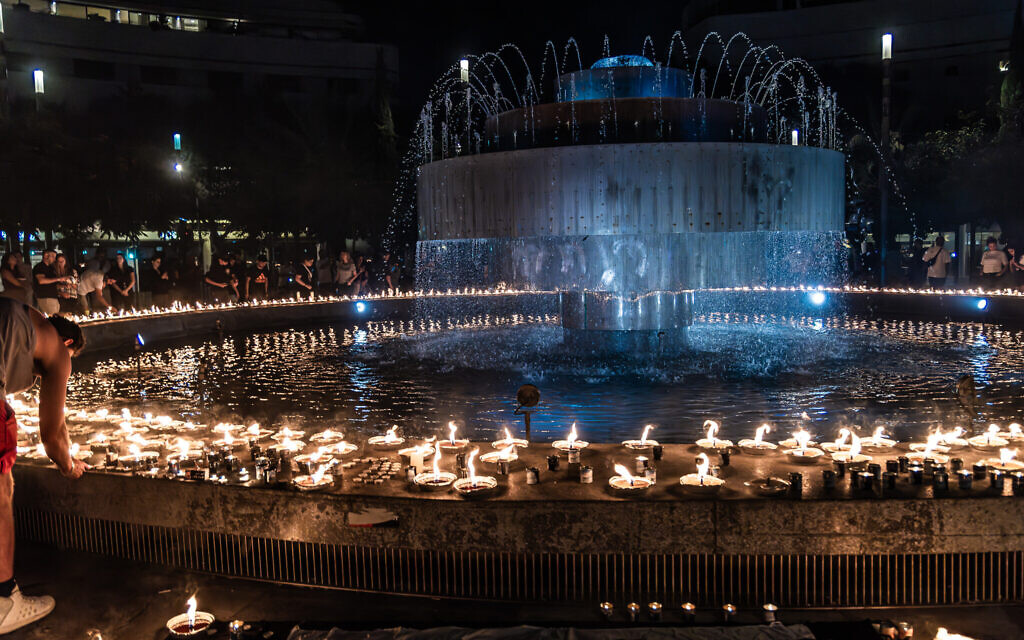drawing by Eren Valkovski in Haaretz October, 18
translation :
Herzi Halevi, the chief of staff :”that’s it, it’s over”
Netanyahou : “What, what idea!”
We can only welcome the elimination by the Israeli army of Yahya Sinwar, the military leader of Hamas in Gaza and architect of the massacre on October 7. This man was responsible for the deaths of thousands, both Israeli and Palestinian, some of whom, for the latter, he killed with his own hands. He succeeded Ismail Haniyeh as head of the political bureau of the movement on August 6 after the latter’s elimination in Tehran. Sinwar was a hardliner within Hamas, and his demands, especially concerning his personal safety, blocked negotiations for the release of hostages. Most commentators, both in Israel and around the world, agree that with this obstacle removed, the path is now clearer to try to reach an agreement that could lead to a ceasefire in Gaza. Is this hypothesis confirmed by the facts for now?
After a year of war, Israeli security officials believe that while Hamas still retains some scattered forces in the Gaza Strip, it no longer poses a military threat. This is why most of the IDF troops have been redeployed to the north. The death of Sinwar further weakens the Palestinian organization. Netanyahu, who since October 7 had made the eradication of Hamas a war objective, could present the elimination of Hamas’s leader as the victory photo he sought. This would allow him to try to erase his personal responsibility in the policy towards Hamas over the years, which led to the fiasco of October 7. Yet, in his speech the evening of Sinwar’s elimination, he avoided mentioning a ceasefire, a return to negotiations for the hostages, or the involvement of the Palestinian Authority in Gaza’s future management. He knows that such declarations would fracture his coalition, which he is desperate to maintain until 2026. Netanyahu also understands that any agreement on the hostages would bolster Kamala Harris’s position today, and with the U.S. elections just two weeks away, he is unlikely to want to hand her such a gift, especially since he has long bet on a Trump victory.
Once again, we see that Netanyahu remains a politician whose decisions are guided primarily by personal interest. In this dramatic moment, which could mark a significant turning point in the Middle East, he is not living up to the situation.
Israel is currently fighting two wars. The first is for its right to live securely within its borders, against Hamas in the south and Hezbollah in the north, both of which, whether directed by Iran or not, deny this right. The second is a more insidious war waged by the Israeli far-right in the West Bank to expand settlements, even contemplating recolonizing parts of the Gaza Strip and, in its wildest dreams, parts of southern Lebanon.
As early as October 8, we supported the Israeli population and its army in this legitimate defense. Today, like the protest movements in Israel, we assert that the tactical victories of the IDF on the ground should be used to reach an agreement, the only way to free the hostages, and that we must prepare for the aftermath with all international support ready to mobilize for civilian administration of Gaza without Hamas.
An agreement with Hamas, brokered by the Americans and certain Sunni countries, could also lead to an end to the conflict with Hezbollah, allowing the northern Israeli population to return to their cities and kibbutzim. The IDF believes it will be able in the coming weeks to destroy the tunnels and arsenals set up in southern Lebanon. However, though weakened, Hezbollah is still capable of launching dozens of rockets and drones daily, which could reach central Israel. The only way to end this threat is through a political agreement involving Lebanon, moderate Arab countries, the European Union, with France playing a major role given its commitments to Lebanon, and the United States.
At the same time, we condemn the dangerous plans in which the Israeli messianic far-right seeks to involve the country, against the will of the majority of its population.
As for the Palestinians, no leader has publicly acknowledged that Hamas’s strategy has led to the greatest disaster for their people since the Nakba. It’s true that the October 7 attack brought the Israeli-Palestinian conflict back to the forefront of international concern. Moreover, following the massacre of nearly 1,200 Israelis on that dark Saturday, the bombings in Gaza—causing tens of thousands of deaths and massive building destruction—have triggered an unprecedented global campaign to delegitimize and condemn Israel, rather than its government’s policies. These outcomes may have bolstered Hamas’s image among Palestinians, but at what cost! Sinwar’s successor may choose to continue this war of attrition, believing that the movement will benefit in the long run. Meanwhile, Netanyahu, unable to achieve a total victory over Hamas, may settle for the continuation of this now low-intensity conflict, which provides him with short-term political gains. However, such choices from both sides offer no perspective other than to widen the gap between the two peoples.
Both sides must have the courage today to acknowledge the impossibility of resolving this conflict by force. Thomas Friedman, the New York Times columnist close to the Democratic administration, wrote this week that Sinwar’s elimination could be a unique opportunity to implement the two-state solution within the framework of normalization of relations between Israel and Saudi Arabia. This possibility remains on the table. Let’s hope that the outcome of the U.S. elections will keep a Democratic administration in power, which could commit to this path.






